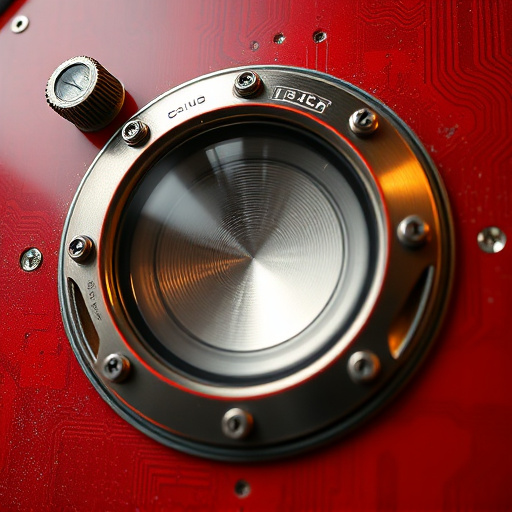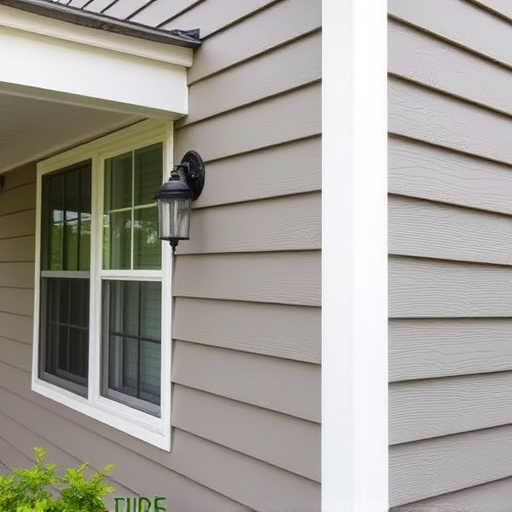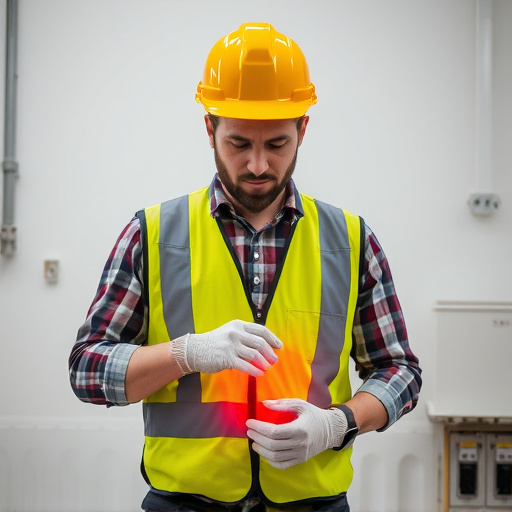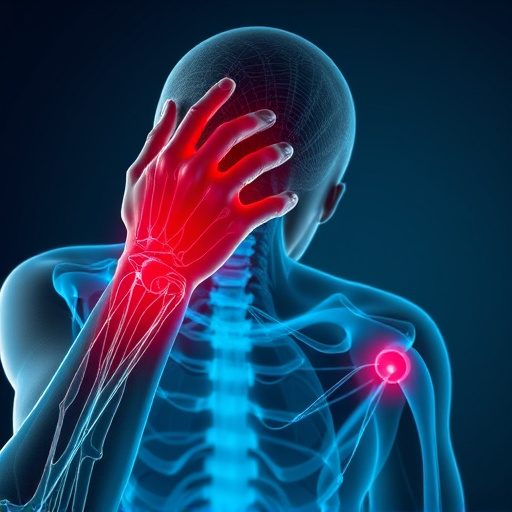Soft Tissue Shockwave Therapy (STST) is a non-invasive, game-changing treatment for chronic tendonitis, fasciitis, and other soft tissue injuries. Using low-energy acoustic waves, STST stimulates healing, reduces inflammation in muscles, tendons, and ligaments, and modulates the immune response to suppress pro-inflammatory mediators. Popular in physical therapy, this method offers targeted pain relief and faster recovery compared to traditional treatments, making it an attractive alternative for patients seeking non-surgical solutions.
“Uncover the transformative potential of Soft Tissue Shockwave Therapy, a non-invasive treatment revolutionizing inflammation management. This cutting-edge approach leverages low-energy acoustic waves to target deep tissues, offering a game-changer for various clinical applications.
In this comprehensive guide, we demystify the science behind its powerful anti-inflammatory effects and explore its growing significance in modern medicine. From sports injuries to chronic conditions, discover how this therapy is reshaping patient care.”
- Understanding Soft Tissue Shockwave Therapy: A Non-Invasive Approach
- The Science Behind Inflammation Reduction with Shockwaves
- Potential Benefits and Applications in Clinical Practice
Understanding Soft Tissue Shockwave Therapy: A Non-Invasive Approach
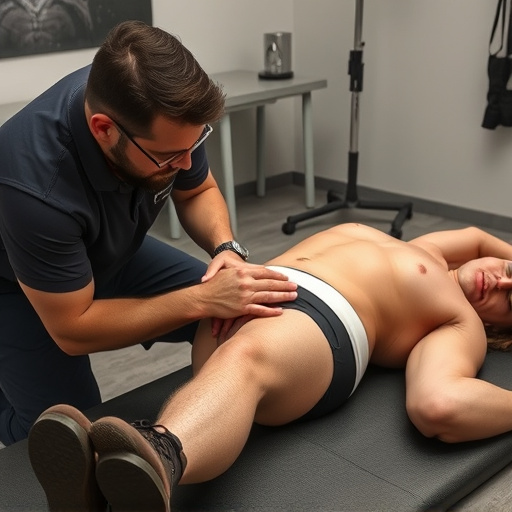
Soft Tissue Shockwave Therapy (STST) is a groundbreaking, non-invasive approach to treating various soft tissue conditions. It utilizes low-energy acoustic waves, or shockwaves, to stimulate healing and reduce inflammation in muscles, tendons, ligaments, and other connective tissues. Unlike surgical interventions, STST offers a safe and effective way to address chronic pain without incisions or prolonged recovery periods.
This therapy has gained popularity in the field of physical therapy and functional rehabilitation due to its ability to promote tissue regeneration and alleviate symptoms associated with conditions like chronic tendonitis, fasciitis, and certain types of headaches. By targeting specific areas of discomfort, STST can provide significant relief while encouraging the body’s natural healing processes.
The Science Behind Inflammation Reduction with Shockwaves
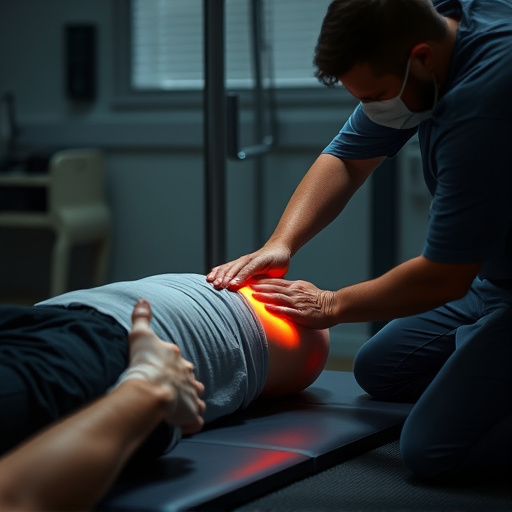
Soft tissue shockwave therapy has emerged as a game-changer in inflammation reduction, offering a non-invasive approach to managing chronic pain and soft tissue injuries. The science behind this innovative treatment lies in its ability to stimulate cellular repair and modulate inflammatory responses. When low-energy acoustic waves, known as shockwaves, are delivered to the affected area, they create tiny micro-traumas in the soft tissues. This process triggers a cascade of biological events, leading to increased blood flow and the recruitment of mesenchymal stem cells. These cells play a crucial role in tissue regeneration, promoting healing and reducing inflammation.
By enhancing local blood circulation, shockwave therapy accelerates the delivery of oxygen and nutrients to damaged tissues, fostering an environment conducive to recovery. Additionally, it helps modulate the immune response, suppressing pro-inflammatory mediators and encouraging anti-inflammatory pathways. This dual action makes soft tissue shockwave therapy a promising modality for individuals seeking alternative solutions to traditional chiropractic care for mobility improvement.
Potential Benefits and Applications in Clinical Practice
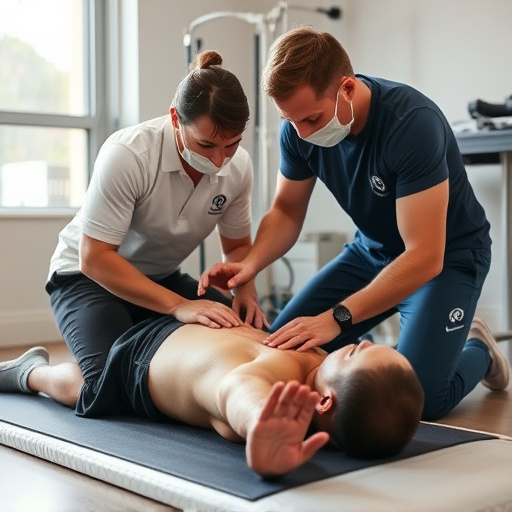
Soft tissue shockwave therapy has emerged as a game-changer in clinical practice, offering potential benefits for various conditions that traditional treatments have struggled to address effectively. Its non-invasive nature makes it an attractive option for patients seeking alternative solutions. By delivering low-intensity acoustic waves to targeted areas, this therapy promotes natural healing processes and reduces inflammation. This approach has proven particularly useful in chiropractic care, providing headache relief and aiding in injury rehabilitation.
One of its key advantages lies in its versatility; shockwave therapy can be applied to treat muscle strains, tendonitis, and even certain musculoskeletal disorders. It accelerates the body’s natural repair mechanisms, fostering tissue regeneration and reducing pain symptoms. Additionally, its non-invasive characteristic makes it a preferred method for patients who may have concerns about surgery or want to avoid long recovery periods associated with more aggressive treatments, such as steroid injections.
Soft tissue shockwave therapy emerges as a promising non-invasive approach for inflammation reduction, offering a wide range of potential benefits across various clinical applications. By harnessing the power of low-energy shockwaves, this treatment method shows promise in alleviating pain and improving function in conditions such as tendinopathy, fasciitis, and other soft tissue injuries. As research continues to evolve, further insights into the mechanisms of action and optimal treatment protocols will undoubtedly enhance its integration into clinical practice, providing patients with effective and minimally invasive options for managing inflammation and promoting healing.




